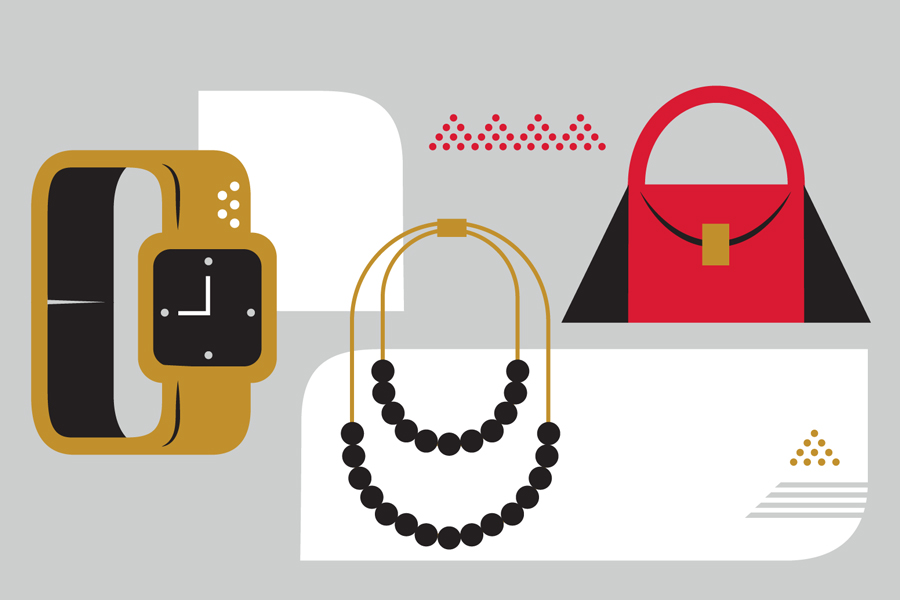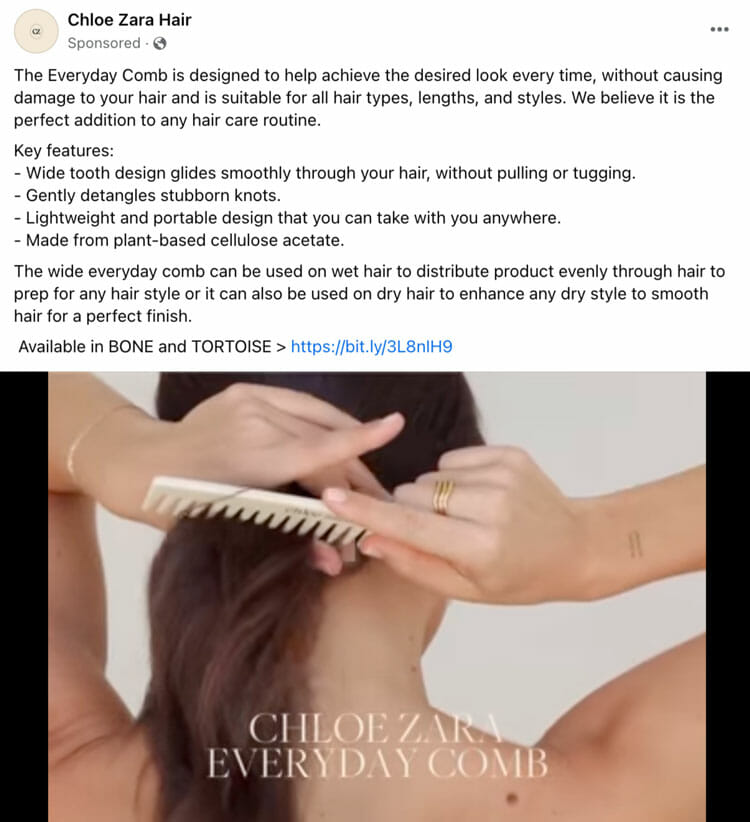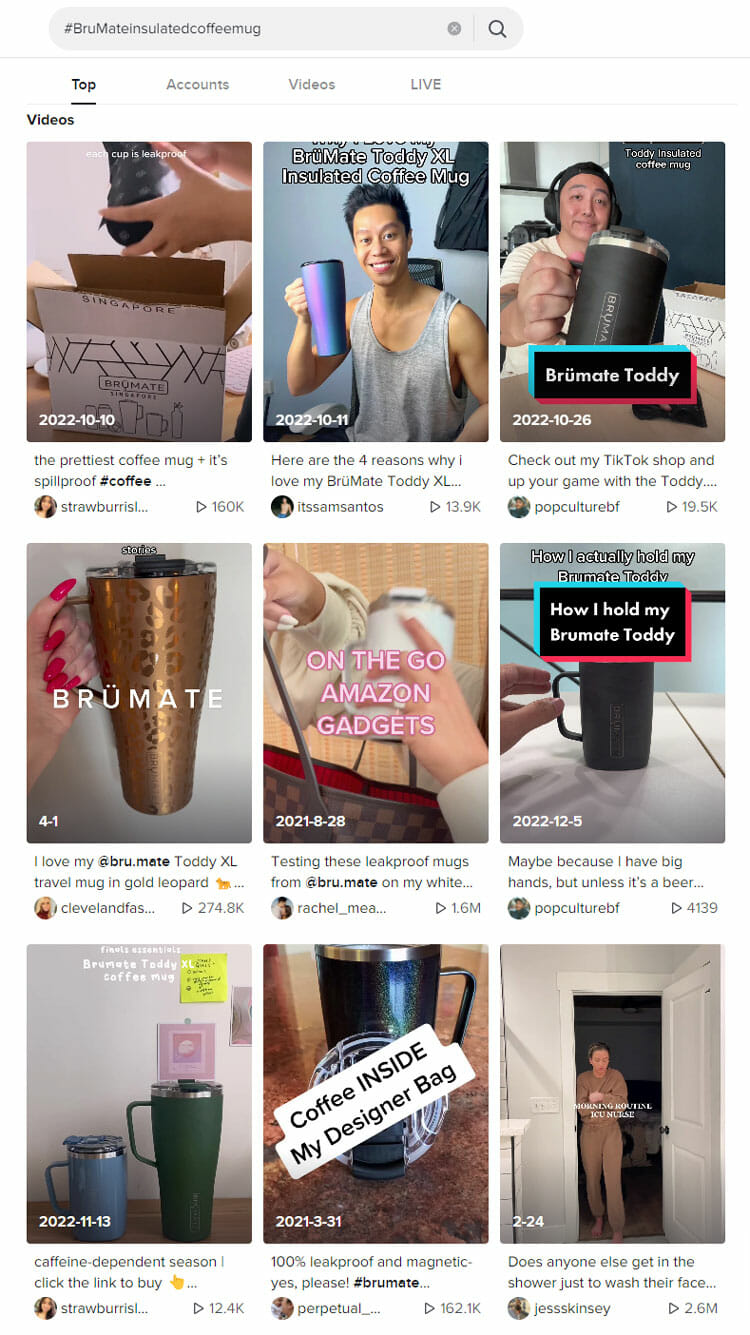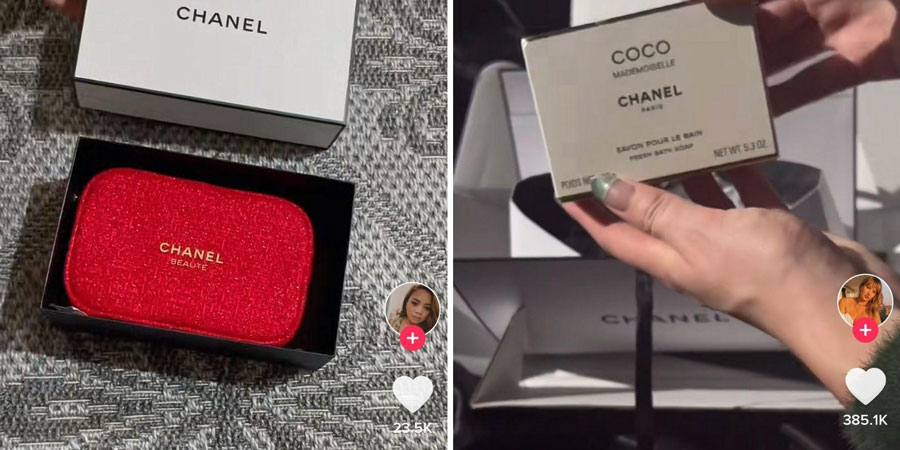Logistics
Warehousing & Fulfillment
Transportation
Industries
Technology & Innovations
E-commerce
E-commerce Fulfillment Services
Lease & Maintenance
Semi Trucks
Logistics
E-commerce
Lease & Maintenance
Buy Used Trucks

A hair comb. It's a dime-a-dozen product that can be bought at any drugstore or big-box retailer. You might think you're safe in believing that there's nothing a brand could do to make this medicine cabinet staple feel exciting or revolutionary. But in modern-day e-commerce, you would be wrong.
Boutique haircare brand Chloe Zara Hair has built a dedicated following off this very concept of bringing premium experiences to everyday hair care. The entire pitch behind their wildly popular Everyday Comb is that a comb isn't just a comb; it's a product that you use every day. So, why does it make sense to skimp on such an essential part of your grooming kit?

For all of the immersive storytelling that evokes luxury and craftsmanship, what Chloe Zara Hair is selling achieves the same function as a comb found at CVS or Walgreens. So, why are some consumers so willing to pay higher prices for widely available products?
The answer is premiumization - and it holds the key to robust brand growth.
Premiumization is a branding and marketing strategy that aims to enhance the value perception of a brand, product, or service. By focusing on traits such as high-quality ingredients, manufacturing, and exclusivity, brands can justify more expensive products in the name of giving customers a more superior option that bridges the gap between luxury products and less inspiring mass-market goods.
In most cases, premium brands are not aiming to create something altogether different than what can be bought elsewhere. It is the practice of taking an everyday product or service that consumers are already familiar with and tapping into how they make those products or services more appealing to their target demographic.
Rather than trying to solve a new problem or pain point, premiumization means that products perform the same function as their cheaper counterparts; the difference is how they make the customer think and feel while using them. This is why brands cannot achieve premiumization simply by hiking the retail price of a product.
Let's go back to our previous example. Chloe Zara Hair has successfully sold a comb as a premium product by presenting hair combing as a ritual that lies at the foundation of great styling efforts. It's a carefully curated package of marketing, storytelling, and brand equity that emphasizes how even so-called 'everyday' products can impart genuine satisfaction.
The growth of the direct-to-consumer e-commerce marketplace has played a huge role in driving premiumization across multiple industries. As the e-commerce market has grown, this has opened up more space for brands to niche down and focus on developing very specific products and experiences that couldn't exist without a vast online audience.
And by having direct control over their sales channels and online presence enables D2C brands to bypass traditional retail channels and curate a premium image from the very beginning
By connecting directly with their customer, it's far easier to design consistent shopping experiences with end-to-end brand storytelling that talk about key brand values such as craftsmanship, sustainability initiatives, and the push for innovation. This facilitates a stream of aspirational content that consumers looking for premium experiences can connect with.
Something that goes hand in hand with the rise of D2C e-commerce is the arrival of the new kid on the social media block: TikTok. No other social media platform has proven itself to be so apt at introducing consumers to premium brands. With its explosive viral trends and a user base composed mostly of younger consumers with less spending power, TikTok provides an interesting window into the art of premiumization at work within social commerce.
While there's plenty of room on the platform for luxury products, it's premium products that tend to garner the most attention. Why? Because luxury experiences are too out of the reach of many consumers to be aspirational, while spending a few dollars extra on a premium brand is far more accessible.
Gen Z has proven itself to be willing to spend big on products - so long as they meet certain standards.65% of Gen Z consumers look for value when making a purchase decision, while 73% of Gen Z consumers are willing to pay up to 10% more for sustainable products. This leaves Gen Z - and by extension platforms like TikTok - very open to brands’ premiumization efforts.
BruMate is one such brand that has experienced its own viral moment on TikTok. Its insulated coffee mug has won legions of Gen Z fans despite retailing at a hefty $39.99. Its mission statement "We design products that empower and inspire, enhancing your every day." offers a perfect example of how premium products can emotionally connect with consumers.

Consumers are highly attuned to price increases, and social media offers a vehicle to spread the news far and wide. Walgreens recently received widespread criticism after an influencer shared a video of an Olay sunscreen retailing for $50 - significantly above what consumers would consider accessible drugstore pricing.
Yet to maintain continued growth in this uncertain climate, higher prices may be a brand's only option to stay profitable and maintain a quality product. But higher prices alone are not enough to make customers see something as a premium product - especially if a price hike isn't accompanied by a perceived increase in value or prestige.
Crucially, rising inflation is coming at a time when customer expectations for the e-commerce experience have never been higher. To secure their loyalty, shoppers expect brands to put considerable effort into making them feel special and valued.
Offering more exclusive, memorable experiences through premiumization can help brands to sidestep the frustration that consumers feel about price increases by boosting the perceived value of their brand through other means.
In addition to brands trying to move closer to the luxury end of the market, premiumization can also happen in the reverse. When consumer spending is constrained, luxury brands may try to target the premium market by releasing a line of more accessible products designed to bring consumers into their sphere of influence.
A viral TikTok trend #thecheapestthing saw users place an order for the cheapest item they could find at luxury brands like Chanel and Gucci, showcasing how even small purchases like soap or cotton pads still come with all the trimmings, such as luxe packaging or free samples.

Premiumization isn't going to be a natural fit for every brand, and what it looks like will differ between industries. The more competitive a sector becomes, the more likely it is that brands will feel pushed to pivot to premium products to differentiate themselves from competitors.
The beauty industry is one such market where digitally-native indie brands have proliferated widely in the past decade, offering strong competition to legacy cosmetics brands that have a firm hold in department stores and drugstores. As a result, premium beauty is projected to grow at 8% annually between 2022 and 2o27, compared with just 5% in the mass beauty category. It's important to keep an eye on growth projections for your own industry to get an understanding of whether premiumization is going to benefit brand growth and improve demand.
The premium market should never be confused with the luxury market, which has a very different target audience and appeal to premium products. For consumers to want to spend a little extra on necessities or everyday products, a brand needs to feel accessible. A certain amount of exclusivity is appealing, but only up to a point; consumers still want to see everyday people like them play a key role in brand storytelling. Too many celebrity influencers or 'perfect' photography can come across as elitist and unfriendly to the very consumers you are hoping to attract.
Consumers are happy to shell out for products they see as being 'worth it'- so long as you can offer them the right combination of perks, brand storytelling, and experiences at the right price point. This can be a tricky balancing act, as perceptions of what makes a brand or a product high value can differ widely between demographics and age groups.
This is why it's so important to have a really solid understanding of your target market and what makes them tick. Robust data collection about consumer preferences, behavior, and purchases helps brands to tailor their product offerings and marketing strategies to capture their customer and continue delivering relevant, curated experiences that foster brand loyalty.
Finding the right strategy for marketing and brand positioning is crucial for successful premiumization, but it's important not to forget about the opportunities that exist to create premium experiences after a purchase has been made.
Premiumization during the post-purchase experience is arguably even more meaningful to consumers than during the shopping journey. Once a purchase has been made, it's easy for brands to scale back their efforts. But a lack of consistency puts your brand at risk of being perceived as shallow or misleading.
Custom fulfillment is one of the best strategies at your disposal to enhance value perceptions at the point of delivery. Branded packaging, thank-you notes, free samples, and inserts such as coupons or lookbooks are all value adds that create the perception of a premium product.
To make this possible, make sure to partner with an e-commerce fulfillment provider like Ryder which can offer advanced custom fulfillment services to create memorable brand experiences.
Premiumization is a powerful strategy for e-commerce brands to differentiate themselves, drive growth, and meet evolving expectations for memorable experiences. By focusing on enhancing the value perception of their brand and products, businesses can offer consumers a superior option that caters to their desire for quality, exclusivity, and aspirational messaging.
However, changing band perceptions is a long-term strategy that isn't going to happen overnight. For successful premiumization, brands need to carefully curate their brand image, storytelling, and post-purchase initiatives to create an experience that justifies a higher price point. Having a deep understanding of your target market is key to delivering the right perks and messaging that capture loyalty and form repeat purchase behaviors.